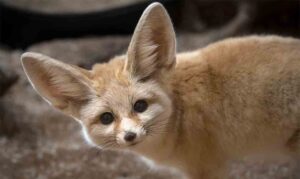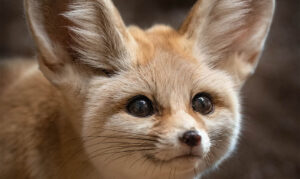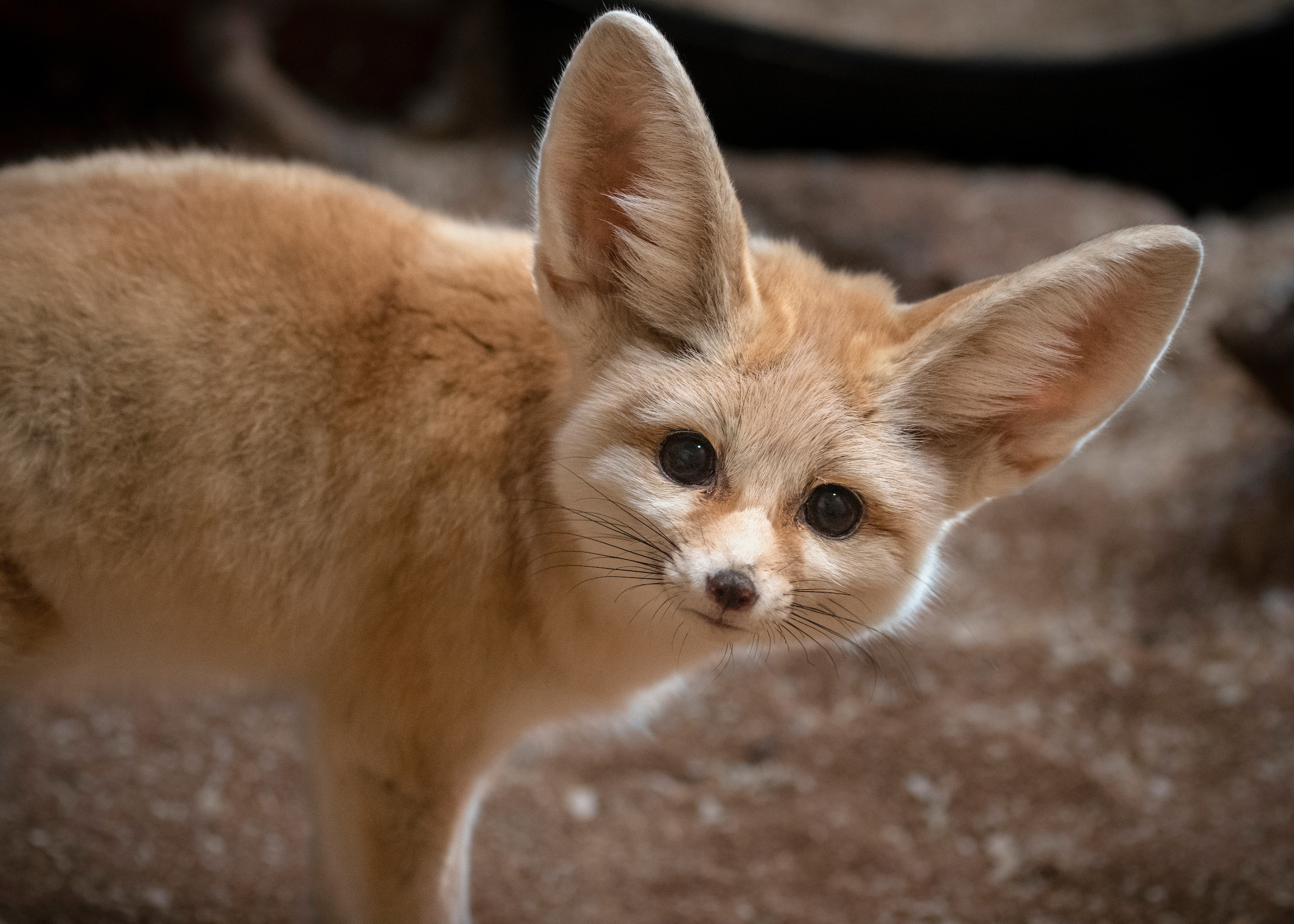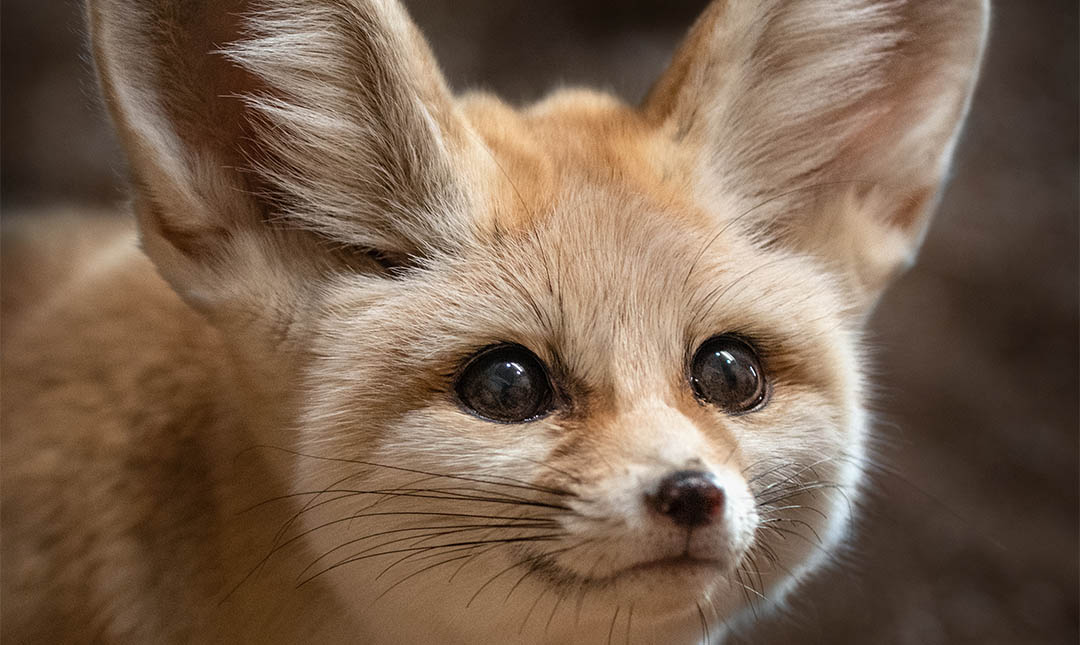About
Fennec foxes, sometimes also referred to as simply fennecs, are among the smallest and most social fox species. With ears almost half the size of their bodies, fennec foxes have excellent hearing and can detect the sounds of prey underground. Using a “mouse jump,” they can spring three feet off the ground to dive onto small mammals, lizards, and insects front feet first. Fennec foxes live in family groups of up to 10 individuals with a breeding pair and many playmates consisting of litter mates and older siblings.
To cope with the extreme temperatures of their desert habitat, fennec foxes hunt by night and dig multi-chambered underground dens where they sleep with family members during the day. Other hot climate adaptations include fur on the soles of their feet that protects them while running on hot sand, and their large ears, which not only aid in hunting, but also help to dissipate body heat. Rainfall in the Sahara Desert averages less than three inches per year, so various adaptations minimize fennec foxes’ need for water. Fennecs are able to derive all the water they need from the food they consume. They keep their tongues curled to conserve salvia and only start to pant when the temperature is above 95 degrees. The fennec fox is the national animal of Algeria and their soccer team is named “Les Fennecs.” The name “fennec” comes from Arabic and is derived from the Persian word fanak or fanaj, referring to a variety of furry animals.


Habitat
Fennecs are found in the deserts of North Africa across the central Sahara from Mauritania to Egypt and the Sinai Peninsula.
Diet
Omnivorous fennecs are opportunistic feeders, consuming small mammals, birds and their eggs, lizards, and insects. They also eat plants, including shoots and roots of grasses, melons, and dates as well as other fruit from which they obtain water.
Physical Characteristics
Body length is 12 to 16 inches; their tails can add another 12 inches. Weight is 2 to 3.5 pounds. Lifespan in the wild is 8 to 10 years and about 14 years in human care.
LOCATION WITHIN THE ZOO
You’ll find this animal in the Winnick Family Children’s Zoo. See Map.



